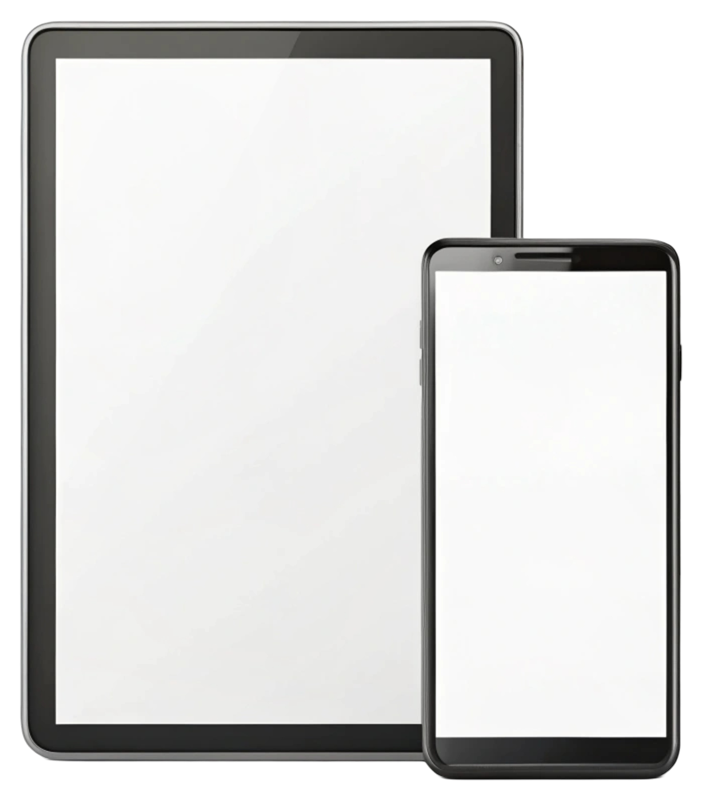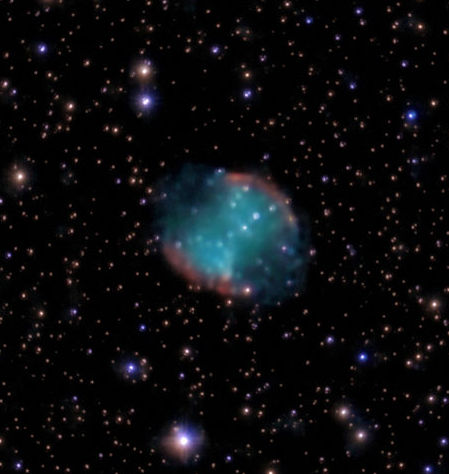Smart Telescopes are specifically designed for astrophotography—also called astroimaging. Different models share many common features but some may not incorporate all features while others may boast unique offerings.
Smart Telescopes are all-in-one devices that combine a wide field of view telescope, a high resolution digital color camera with autofocus, a light pollution filter and a dew heater. Their large viewing area is optimized for celestial objects like galaxies, nebulae, star clusters and the Sun and Moon. Planets in our solar system, such as Jupiter and Saturn, can be photographed but will not fill the viewable area.
 Unlike traditional telescopes, there is no optical eyepiece. Instead, an app, installed on your smartphone or tablet, allows you to view images and control your Smart Telescope. Your smart device also provides GPS for location determination and Internet access for weather and other data.
Unlike traditional telescopes, there is no optical eyepiece. Instead, an app, installed on your smartphone or tablet, allows you to view images and control your Smart Telescope. Your smart device also provides GPS for location determination and Internet access for weather and other data.
Automatic setup and self alignment allow Smart Telescopes to be fully operational within minutes. They suggest "best targets" based on date and time, your location and maybe even the weather and estimated light pollution level. Their GoTo function guides them to the selected target while precise motorized tracking keeps the target centered in the display as the Earth rotates.
A built-in sky atlas allows you to navigate quickly to your chosen celestial bodies, so there is no need to consult and interpret a star chart.
 A single photo of a dim, distant celestial object—which may not be visible to the unaided eye—will likely not produce the desired result, so a stacking technique is employed. Many photos—perhaps a hundred or more—are stacked (combined) to reduce noise and improve image quality. One or more filters may be automatically applied to remove offending components like city lights. After further processing by exclusive algorithms or AI, celestial objects with stunning color and detail—not seen using a traditional telescope—are displayed in real time and saved with little or no user intervention.
A single photo of a dim, distant celestial object—which may not be visible to the unaided eye—will likely not produce the desired result, so a stacking technique is employed. Many photos—perhaps a hundred or more—are stacked (combined) to reduce noise and improve image quality. One or more filters may be automatically applied to remove offending components like city lights. After further processing by exclusive algorithms or AI, celestial objects with stunning color and detail—not seen using a traditional telescope—are displayed in real time and saved with little or no user intervention.
You may even be able to close the app and let the device continue to track, capture and process images by itself. Or, schedule fully autonomous late-night imaging sessions. Too cold outside? WiFi range is usually sufficient to allow you to comfortably lounge inside while your Smart Telescope is diligently working outside. When needed, an integrated dew heater will mitigate the formation of moisture on the objective lens.
There is usually a way to share the live image feed. Depending on the model, multiple smart devices can connect to the Smart Telescope, it can be streamed to a smart TV, or the smart device can output a HDMI signal to a compatible monitor.
When you prefer to manually control your Smart Telescope, key parameters are often user adjustable and raw (unprocessed) color images are available so you can use your favorite software for post processing.
Alt azimuth mounts are common and many models are supplied with tripods. An internal rechargeable battery provides power for 4 to 11 hours, depending on the model. And most are small and lightweight, ranging from 4 to 11 lbs; the heaviest is 27.6 lbs excluding its tripod.
Although the array of seemingly complex features may appear daunting, they are fully assembled, preconfigured, easy to operate and ready to begin imaging quickly.
Keep in mind that features vary by model, so become familiar with the different devices before choosing one. The Product Overviews on this website are a good place to start, followed by detailed information on the manufacturers' websites.
Celestial Image: M27 - Dumbbell Nebula — Credit: Astronomy Guy